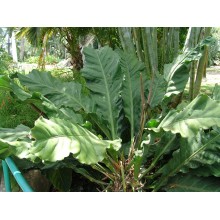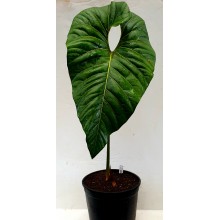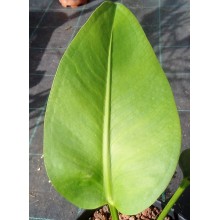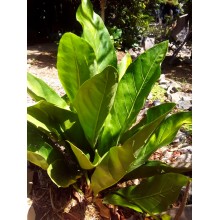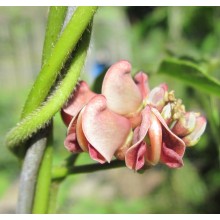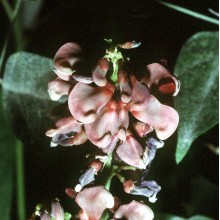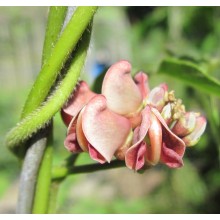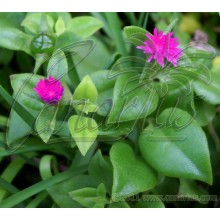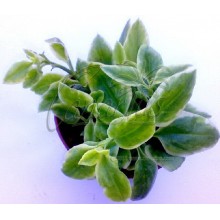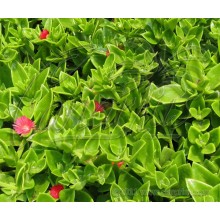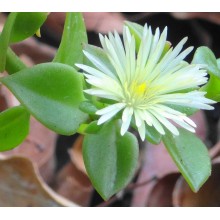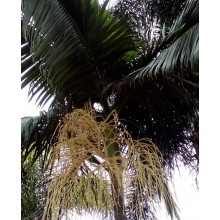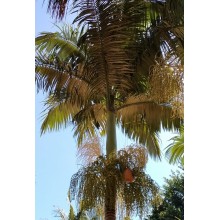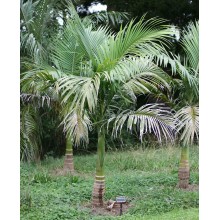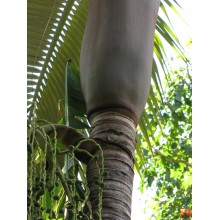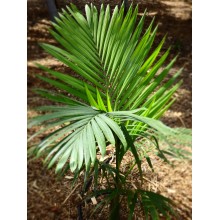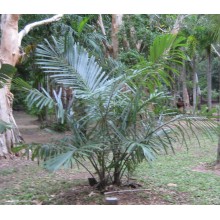Allgemeine Pflanzen Es gibt 1882 Artikel.

Wenn Sie exotische Pflanzen mögen, sind Sie hier an der richtigen Adresse. Canarius bietet die schwierig zu findenden exotischen Pflanzen an die in Gartenzentren nur selten erhältlich sind. Unser Shop hat natürliche Arten sowie seltene Hybriden im Angebot. Wir bieten exotische Pflanzen von den kanarischen Inseln.
Wir verschicken Bestellungen nach überall in Europa, wie auch weltweit. Die Pakete werden in nur wenigen Tagen nach der Verschickung Ihr Zuhause erreichen (allerdings brauchen wir ein paar Tage für die Bearbeitung). Kontaktieren Sie uns gerne wenn Sie Fragen haben sollten.
Unterkategorien
-
Sukkulenten
Die Wüsten trockenen Gebiete dieser Erde bieten den interessantesten Pflanzen ein Zuhause. Canarius bietet ein wachsendesSortiment von sukkulenten Pflanzen von höchster Qualität an, da diese gewachsen sind draußen in der prallen Sonne der kanarischen Inseln.
Sukkulenten oder "fette Pflanzen“ sind wasserspeichernde Arten, die an trockene Bedingungen gut angepasst sind. Sie speichern Sukkulenz (Saft, Wasser) in ihren Blätter, Stämmen oder Wurzeln und haben oft einen dickes und fleischiges Aussehen.
-
Exoten
Exotische Pflanzen sind Arten, die aus anderen Teilen der Erde stammen, deren natürliche Umgebung dies nicht ist. Normalerweise haben sie einen ornamentalen Charakter, wachsen üppig, mit farbenfrohen Blüten, ungewöhnlichem Aussehe... Im Folgenden können Sie finden eine große Auswahl von exotischen Pflanzen:von Bromelien, Heliconias, Palmen bis hin zu Hauspflanzen.
Exotische Pflanzen haben keinen besonderen Nutzen. Sammler kaufen diese Art von Pflanzen aufgrund ihrer Seltenheit, als Innen- oder im Freien Dekorations, abhängig von ihren Ansprüchen.
-
Obst und Kräuter
Obst, Kräuter und medizinische Pflanzen sollen zu einer besseren Gesundheit führen. In dieser Sektion erzeugt jeder Pflanzentyp einen gesunden Effekt, sowohl Obstbäume (Feijoa, Ananas, Fina de Jete...) als auch Pflanzen für die Gesundheit wie Graviolen, Aloe vera, Callisia fragrans...
Im normalen Stoffwechsel aller Lebewesen produziert der Organismus Substanzen aus Nährstoffen, die in der Umgebung vorhanden sind; manche dieser Chemikalien sind ein Teil der Prozesse in allen (oder beinahe) Arten von Lebewesen. Normalerweise sind die nutzbaren Verbindungen in einigen Teilen konzentriert: Blätter, Samen, Blüten...
Finden Sie Ihre empfehlenswerte Pflanze heraus und kaufen Sie sie online!
-
Besonderheiten
Auf canarius.com probieren wir Grenezn im Bereich der Botanik zu beseitigen. In unserem Onlineshop versuchen wir den Kauf/Verkauf von Pflanzen nach überall auf der Welt zu vereinfachen. Daher züchten wir vond den gewöhnlichsten bis hin zu den seltensten Pflanzen alles, wie Sie in dieser Sektion sehen können.
-
Anthurium crassinervium
Anthurium crassinervium
This "birdnest Anthurium" with glossy, wide and ruffled leaves can slowly grow to enormous proportions. As a house plant it is usually smaller.
46,00 € -
Anthurium decipiens
Anthurium decipiens
This giant-leaved aroid is considered a holy grial by those who love exotic foliage. It was called Anthurium salgarense until 2019, when it was split out of the species salgarense as it was described as a new species on its own.
285,00 € -
Anthurium maricense
Anthurium maricense
Small, elegant birdnest Anthurium with roundis thick leaves,15-30 cm long. It is endemic to a small coastal area close to Río de Janeiro, exposed to wind and drought. It is surprisingly hardy to cold and stood light frost in Mediterranean conditions.
46,20 € -
Anthurium schlechtendalii
Anthurium schlechtendalii
Extremely ornamental birdnest anthurium with nice dark purple inflorescences, followed by thick "tails" of glossy red fruits. It does well in pots or as an epiphytes, attaining 50-120 cm in height. It is mid-sized and goes well as an indoor plant.
58,90 € -
Anthurium wendlingeri
Anthurium wendlingeri
Truly exotic aroid with narrow and long, penduluous , dark leaves and an unusal corkscrew inflorescence.
68,00 € -
Apios americana 'Early Blooming'
Apios americana 'Early Blooming'
This is a early blooming cultivar of Groundnut or Hopniss. This "ancient crop", scientifically named Apios americana, belongs to the family of beans and actually grows much like a bean, but in its case the edible part is the tuberous root system hidden underground, which is delicious and high in protein.
18,30 € -
Apios americana 'Late Blooming'
Apios americana 'Late Blooming'
This is a late blooming cultivar of Groundnut or Hopniss. This "ancient crop", scientifically named Apios americana, belongs to the family of beans and actually grows much like a bean, but in its case the edible part is the tuberous root system hidden underground, which is delicious and high in protein.
18,30 € -
Apios americana 'Nutty'
Apios americana 'Nutty'
This is a nutty-tasting blooming cultivar of Groundnut or Hopniss. This "ancient crop", scientifically named Apios americana, belongs to the family of beans and actually grows much like a bean, but in its case the edible part is the tuberous root system hidden underground, which is delicious and high in protein.
18,30 € -
Aptenia cordifolia
Aptenia cordifolia
Four 14-20 cuttings - Creeping, fast growing groundcover mesemb with flowers in summer. This is the true A. cordifolia, with hearth-shaped leaves with bumpy surface and purple-pink flowers. It takes more cold than other aptenias.
11,00 € -
Aptenia cordifolia Variegata
Aptenia cordifolia Variegata
NEW ! - Branched plant. Delicate creeping succulent with cream and green foliage. Leaves are glossy, hearth-shaped and slightly succulent.
12,50 € -
Aptenia cordifolia x A. haeckeliana
Aptenia cordifolia x A. haeckeliana
Four 15-20 cm cuttings. Creeping, fast growing succulent plant with bright pink-red flowers in summer. This hybrid Aptenia is the perfect groundcover for gardens in coastal mediterranean climates. This is called Aptenia 'Red Apple' in the USA.
11,20 € -
Aptenia haeckeliana
Aptenia haeckeliana
Aptenias are excellent groundcover plants. They are creeping succulents, potentially evergrowing in the "mesemb" family: Aizoaceae. There are 4 species in the genus Aptenia and this A. haeckeliana is the beautiful one with the yellow flowers.
12,40 € -
Archontophoenix maxima
Archontophoenix maxima
Very elegant palm from Australia, with slender ringet trunk, topped by a showy bright green crownshaft.
32,50 € -
Archontophoenix myolaensis
Archontophoenix myolaensis
This species of Archontophoenix is native to a small area in the mountainous region west of Cairns in N.W. Queensland, found in a few locations in gallery forests following rivers. It is similar to the more common Archontophoenix cunninghamiana, with a slightly smaller size, a bluer crownshaft and some other minor differences.
42,00 € -
Archontophoenix purpurea
Archontophoenix purpurea
The showy, colourful crownshaft is the masterpiece of this elegant solitary palm from australia. A rainbow of purple, green and blue.
52,00 € -
Archontophoenix tuckeri
Archontophoenix tuckeri
Uncommon Archontophoenix species from Northern Australia. Leaves are silver underneath, somewhat pendulous or drooping. It is suited to coastal Mediterranean condition and it takes cool weather and short, light frosts.
28,60 € -
Areca catechu
Areca catechu
Areca catechu is a species of palm native to the Philippines cultivated for areca nuts. Medium-sized palm tree, growing straight to 20 m tall, with a trunk 10–15 cm in diameter. The leaves are 1.5–2 m long, pinnate, with numerous, crowded leaflets.
29,40 € -
Arenga australasica
Arenga australasica
Clumping feather palm from NE Australia, found mainly in coastal areas. Despite its tropical origin, it grows in colder climates.
72,00 €
Im Moment gibt es nur wenige Produkte in dieser Kategorie Allgemeine Pflanzen




















